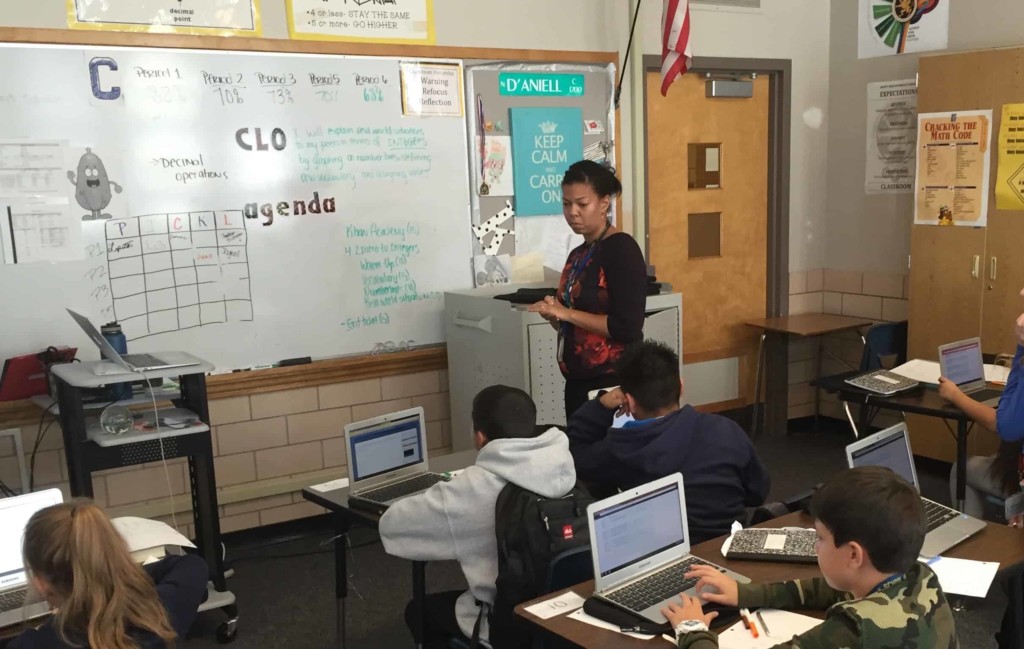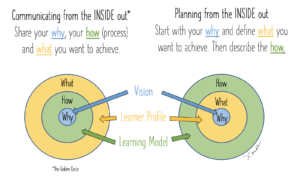Representation Matters

Yet, even with 22 years as a teacher and school leader, the study’s evidence is compelling. If a black student has just one black teacher by third grade, that student is 13 percent more likely to enroll in college – those who had two black teachers were 32 percent more likely. This bolsters the research team’s 2017 study that found a low-income black student’s probability of dropping out of high school is reduced by 29 percent if that student has one black teacher in grades 3-5.
These results may speak to the impact of teachers who can relate to students and role models, as well as teacher expectations. The bottom line is, representation matters. But, it doesn’t just matter for feel good, soft skills reasons, it matters for kids’ academics.
The Gap Matters
In philanthropy, it’s our business to see the opportunity in gaps. Currently, only 2 percent of all teachers are African American and male; 80 percent of teachers are white and female. The entire lens of which a child receives an education is mostly through the perspective of white women. Addressing the imbalance among the teaching core is an obvious way to improve educational outcomes for ALL students.
When I was a child, I don’t think I really ever thought about it. As a white person, I suppose that is part of my privilege, that I didn’t think about it because I didn’t have to think about it. Most of my peers in the Catholic schools I grew up in were white. Most of my teachers were nuns – white women. I never had a teacher of color in college or graduate school.
As the mother of a young, black woman, my experience is very troublesome to me. So, far, her teachers have been much like mine – white and female – and I can’t help but think about how it makes her feel, how it will impact her, and all the ways she might be underestimated because of the color of her skin.
In our education system today, we can’t ignore this gap. If you’re a kid of color and you had a teacher of color in preschool through fifth grade, you’re 39 percent more likely to persist through high school. That is a powerful number that is statistically significant. We can’t be ignorant to the impact diversity and representation has on students of color, but also on the wide diverse spectrum students represent. We must raise expectations to acknowledge that a lack of representation creates missed opportunities to form bonds of understanding within the school community and within the future citizens we are teaching.
Expectations Matter
Expectation is everything – especially from teachers. For young kids, when they’re being formed and molded and taught and crafted, someone believing in them is what pushes them to be their best. When you don’t believe in them, they know it and they act accordingly. It’s true for adults as well. It’s human nature. We rise to the level of expectation all the time.
The recent study on teacher expectations found that while teachers are generally overly optimistic about the college potential for all students, white teachers are significantly more optimistic about white students than they are about black students. The higher expectations given by black teachers, the study finds, leads to higher grade-point average, more time spent on homework and can raise black students own expectations for their educational attainment.
Listening Matters
It wasn’t until I became a teacher that I truly understood how representation mattered. The first school I ever taught at was in Chicago, where I was the only white teacher. I was 22, and thank goodness colleagues leaned into me and, rather than make me feel dumb and terrible, or feel like a bad person or teacher, they were just like, “There’s a bunch of things that you could learn, and we’ll help you.”
Lots of the teachers who I taught with were from the same neighborhood where we taught, so they knew the long, rich history of what had happened in that neighborhood, including discrimination and all the things that I probably didn’t think about until I was graciously guided by some of these older teachers.
I watched veteran teacher Henry Martin. He had attended the elementary school where we taught and still lived in the neighborhood. The way he talked to children and the way they related to him, while it was always professional, it always felt more like he was their uncle.
He was family to those kids. That gives you different leverage than when you’re “just” their teacher. I’m always going to be a white woman, so it wasn’t exactly something I could aspire to, but I learned, especially as I became a school leader, that there were other ways I could make an impact.
As an ally, we can actively support and pursue hiring and developing people with different perspectives, different color skin, different genders and different beliefs. Kids get whatever lens the teacher shows up with, and if that is the same in every classroom, we’re not giving kids a variety and a way to think differently.
We can emphasize professional development for all teachers. It wasn’t called “culturally responsive curriculum” when I was a principal, but it was about meeting kids where they are and making connections, home-to-school connections, and being part of the community. All teachers were expected to go visit the families of their students. Supporting educators to serve our increasingly diverse classrooms is paramount to their success – and their students’ success.
I think my most important role now, and the most important role of majority teachers and leaders, is to listen and not make assumptions that we know how to lead this work. We need to listen to be partners in this work with our teachers of color counterparts. I don’t think many of us really understood how much we benefited from systems that were set up for us, and by us, for so many years.
We need to make sure we are fierce advocates for other people, not to be their voice, because they have their own voice. We need to be side-by-side with our counterparts of color to make sure their voices are amplified.
For more, see:
This post was originally published on www.kauffman.org.
Stay in-the-know with all things edtech and innovations in learning by signing up to receive our weekly newsletter, Smart Update. This post includes mentions of a Getting Smart partner. For a full list of partners, affiliate organizations and all other disclosures, please see our Partner page.






Simran
Everything counts when it comes to learning and teaching, this is the best blog one must read. The steps described are very informative.